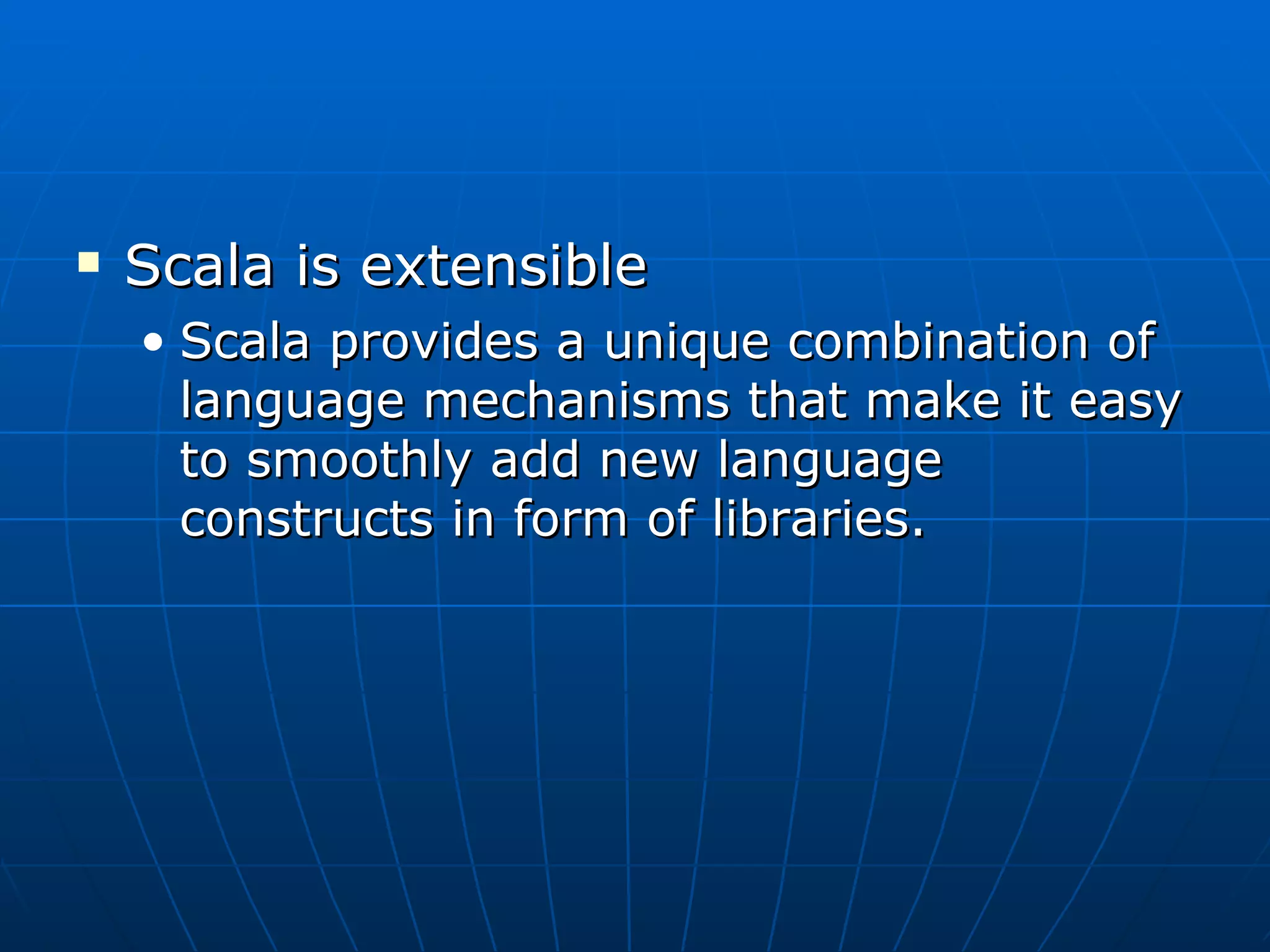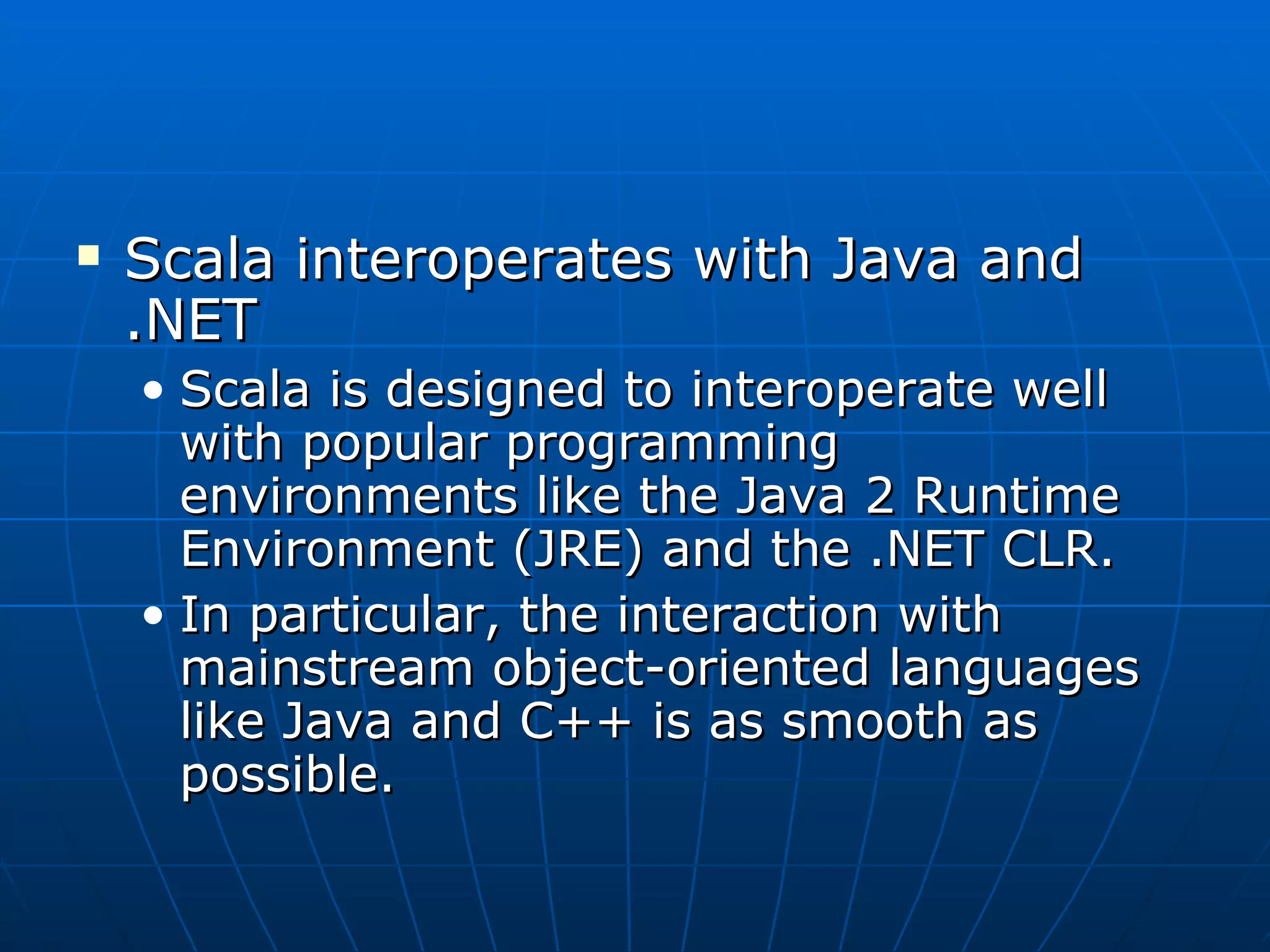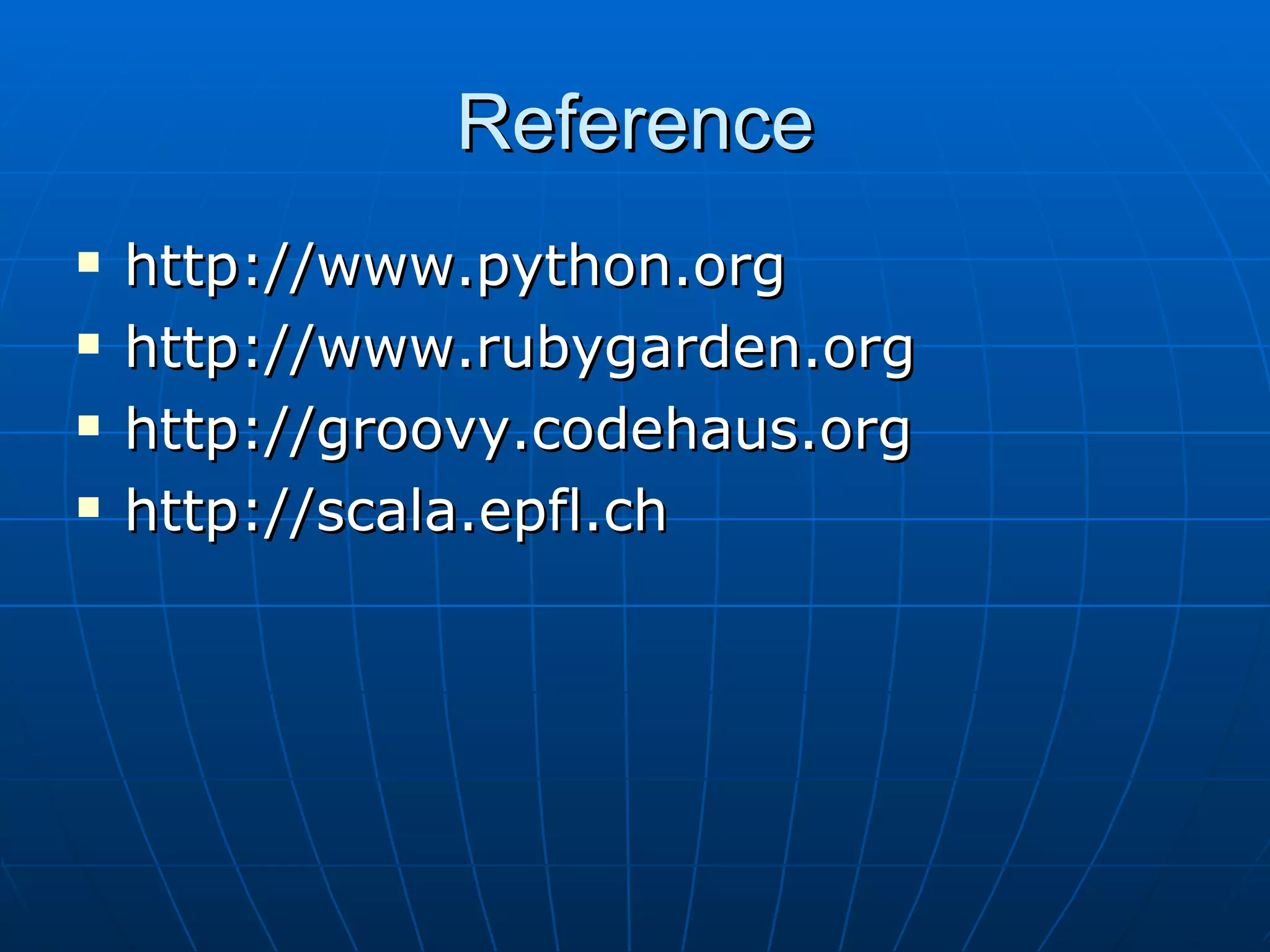This document summarizes several programming languages that are currently in development or may be enhanced in the future, including Python 3000, Ruby 2, Groovy, and Scala. Python 3000 is an upcoming version of Python that will include changes like multi-line imports and reverse iteration. Ruby 2 promises improvements like bytecode compilation and thread safety. Groovy is designed for the Java platform and includes features like closures. Scala combines object-oriented and functional programming with a static type system and interoperability with Java.
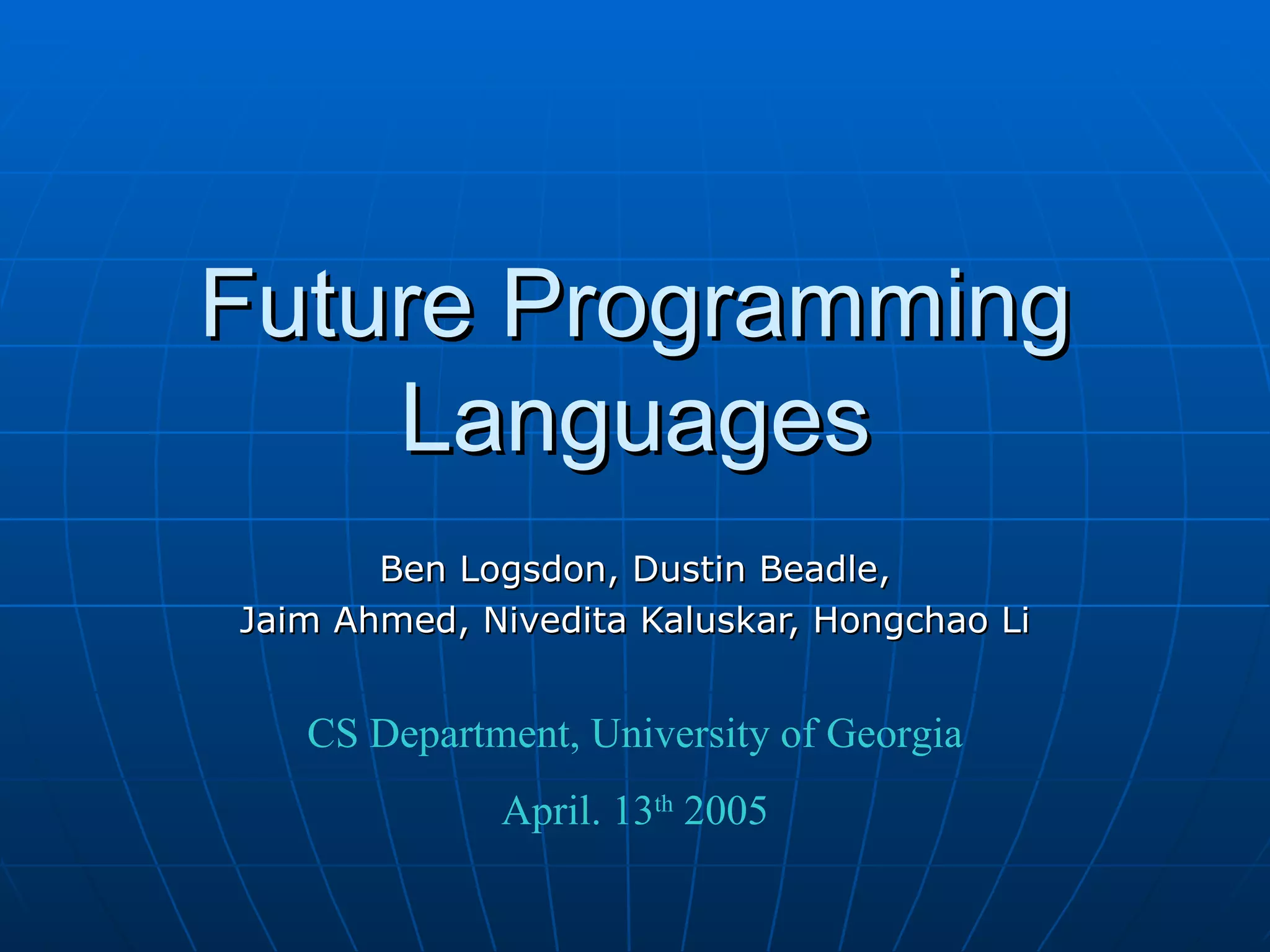
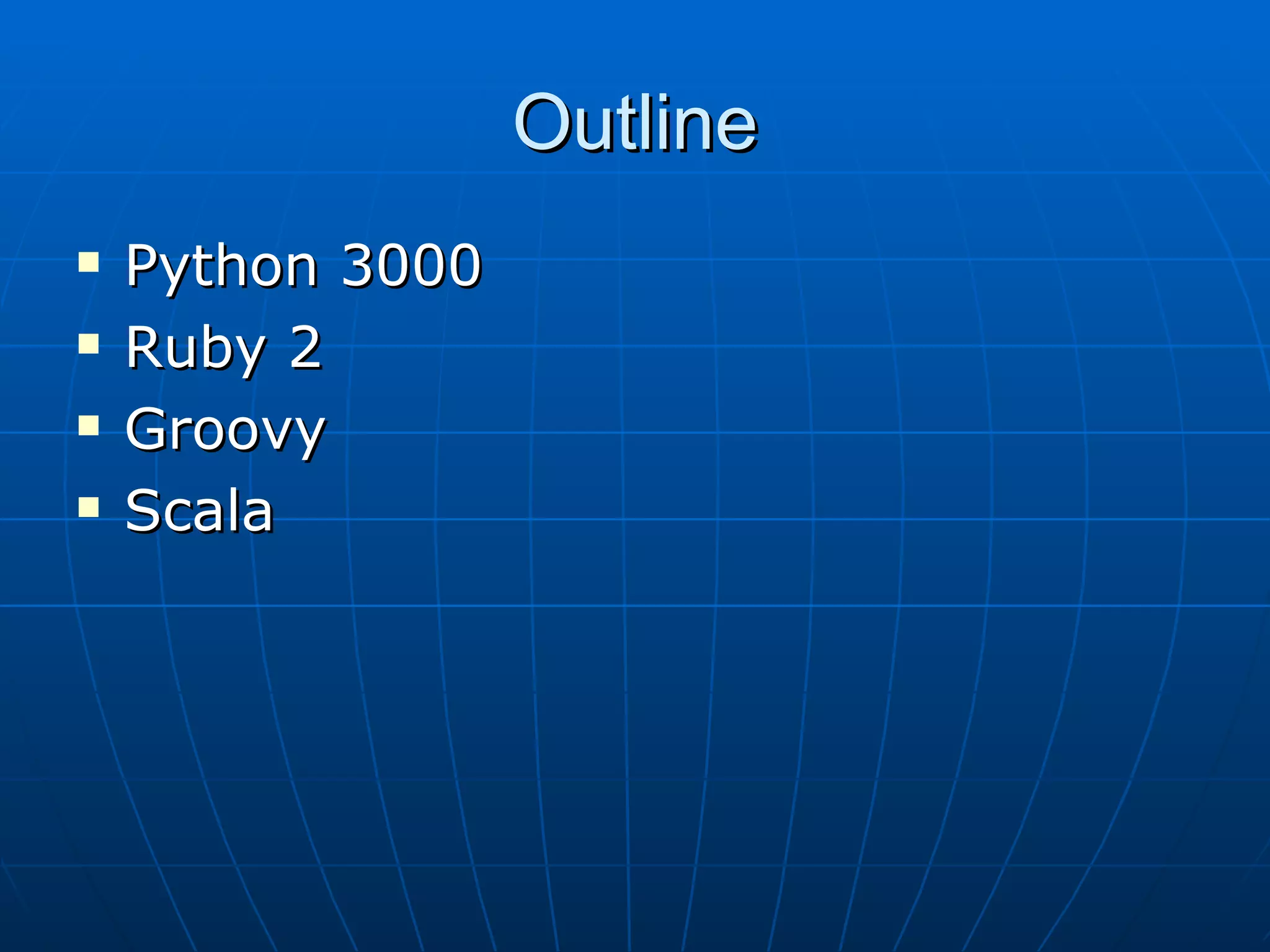
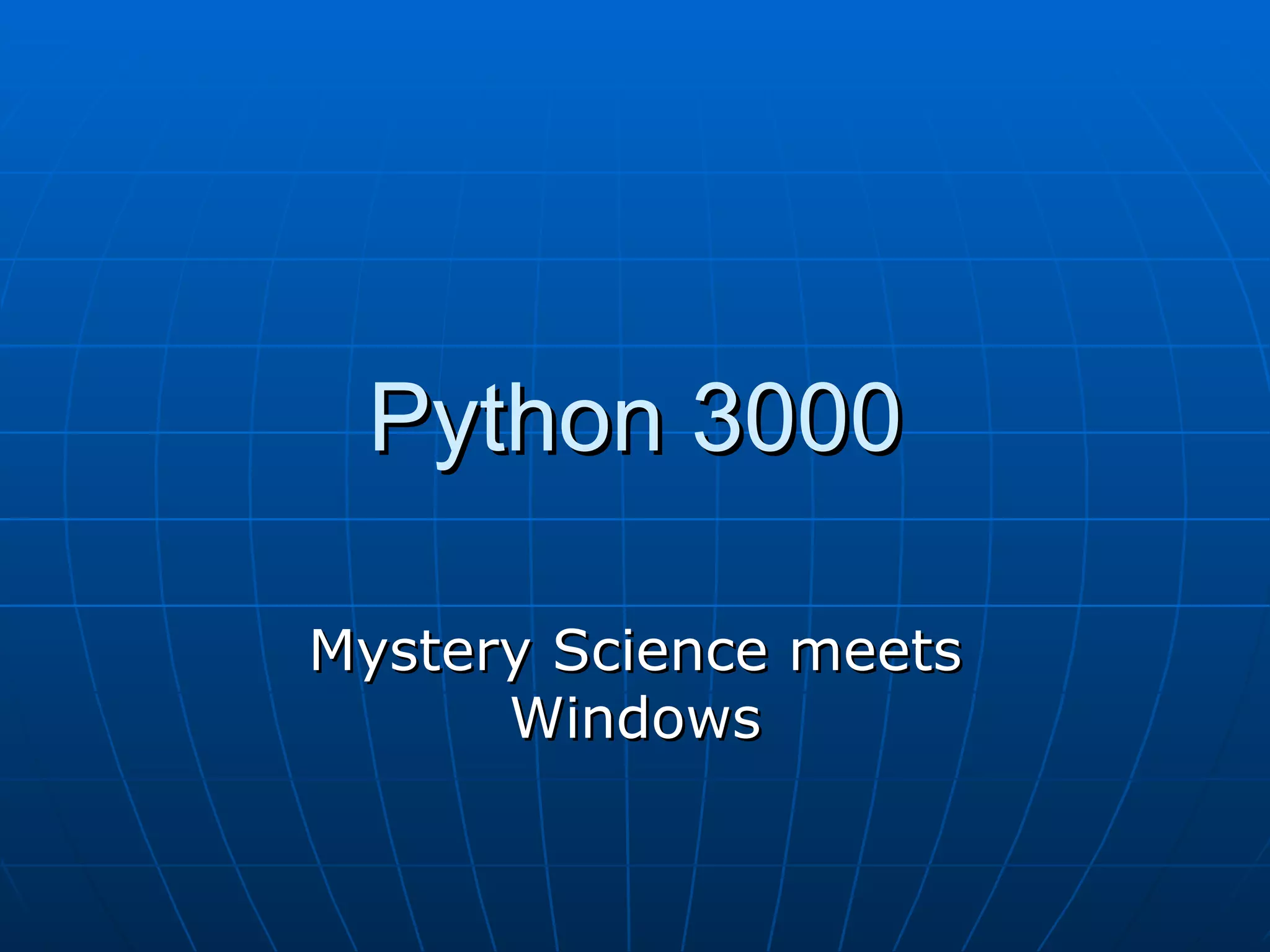
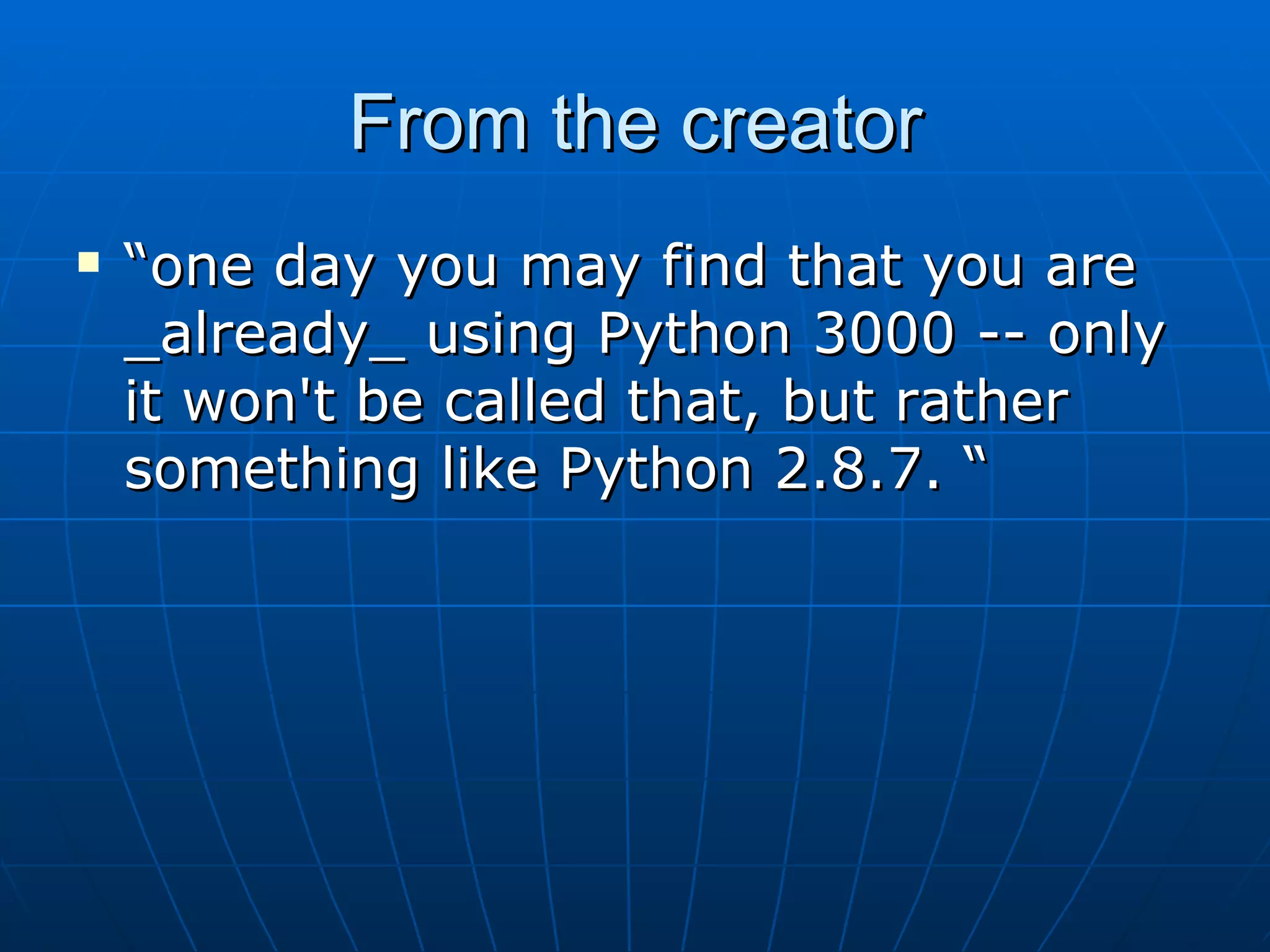
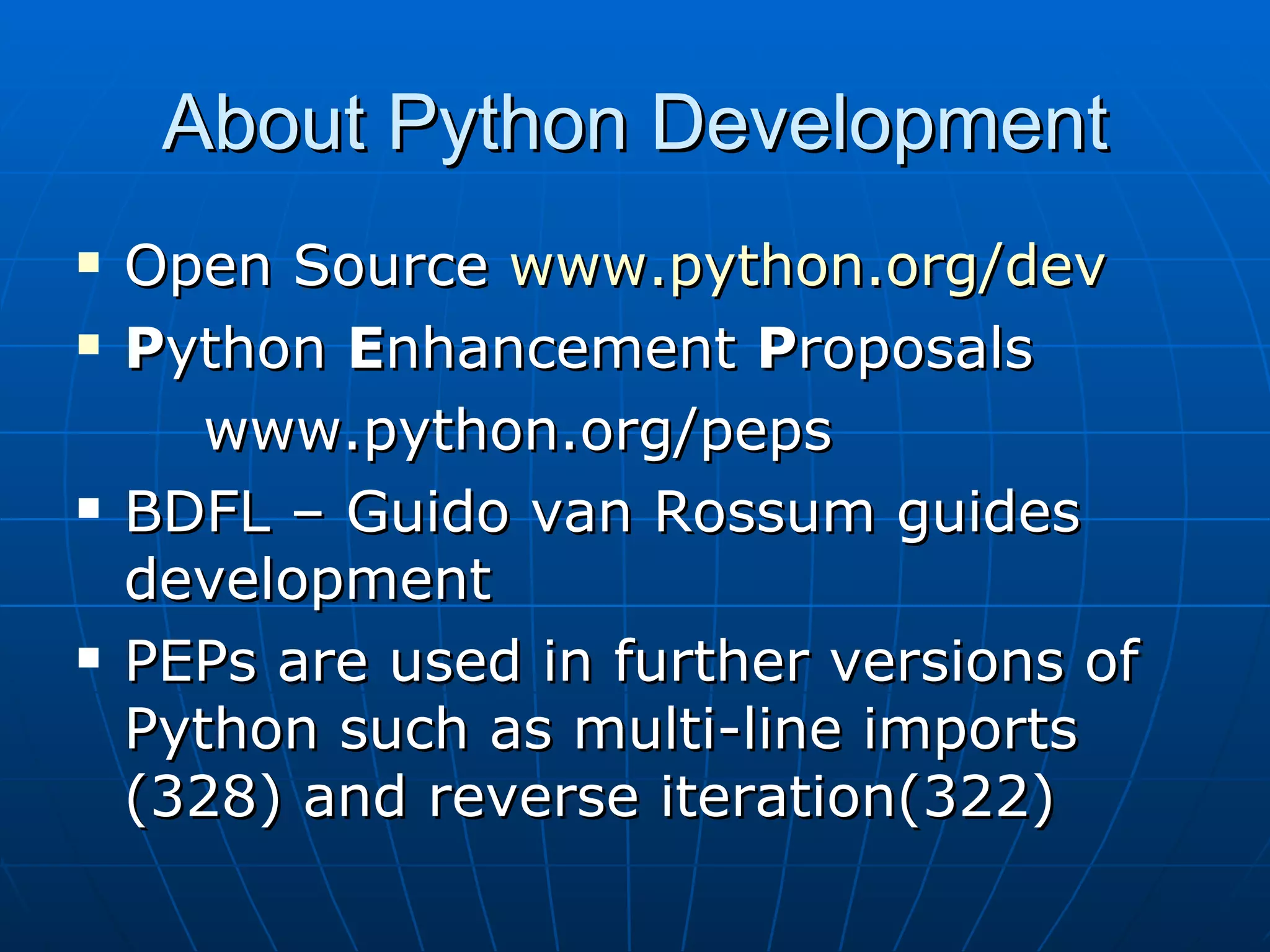
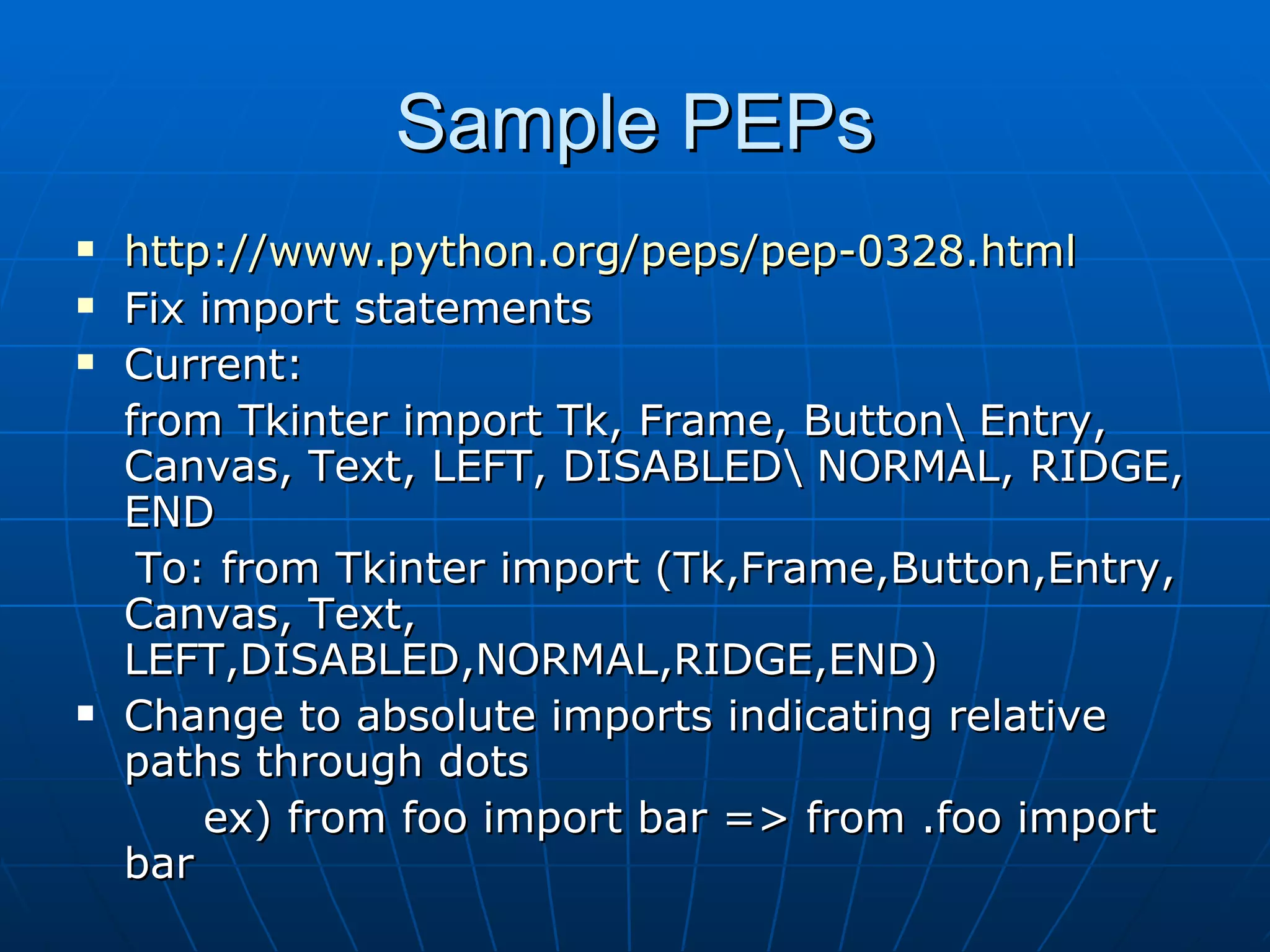
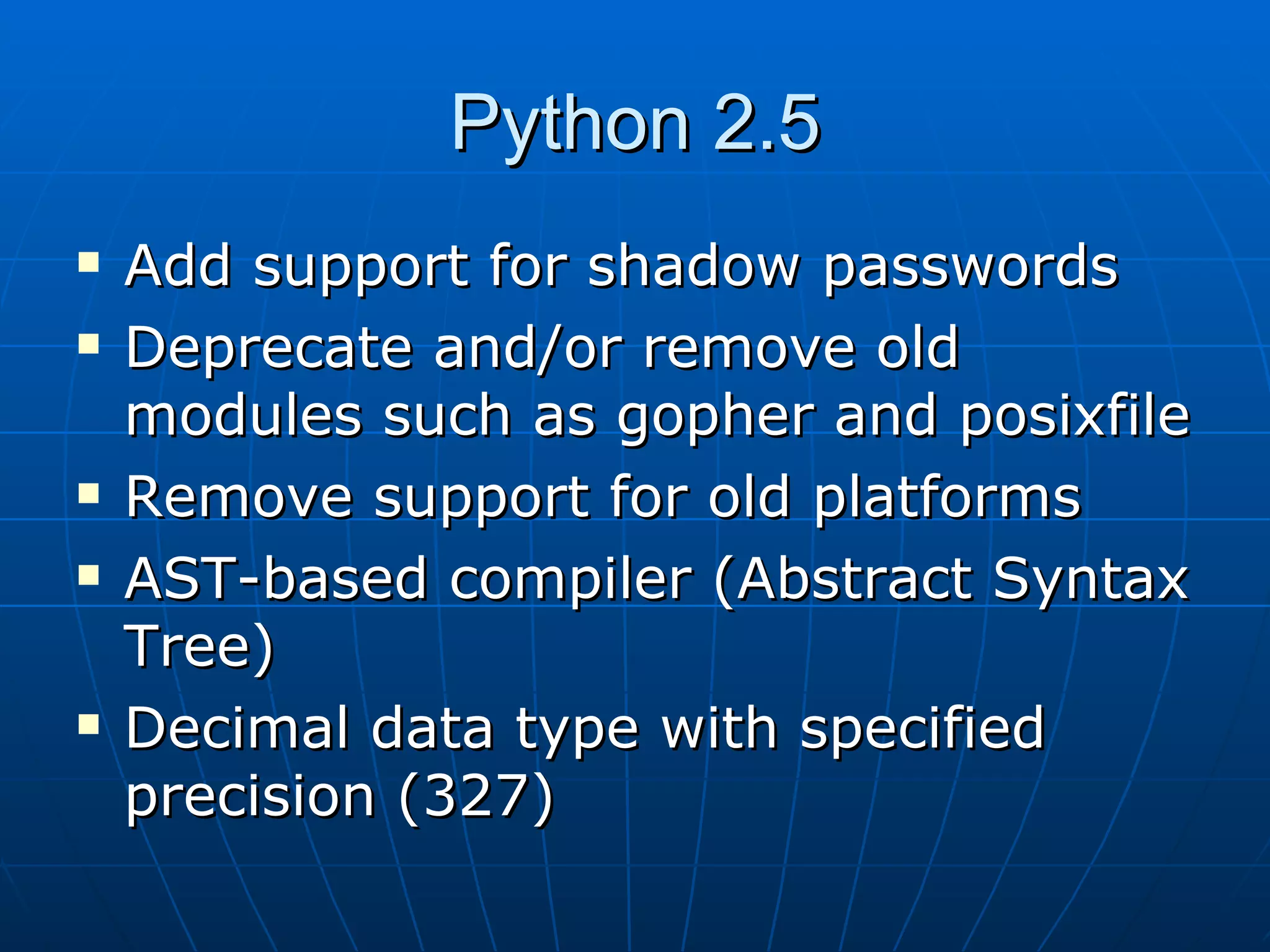
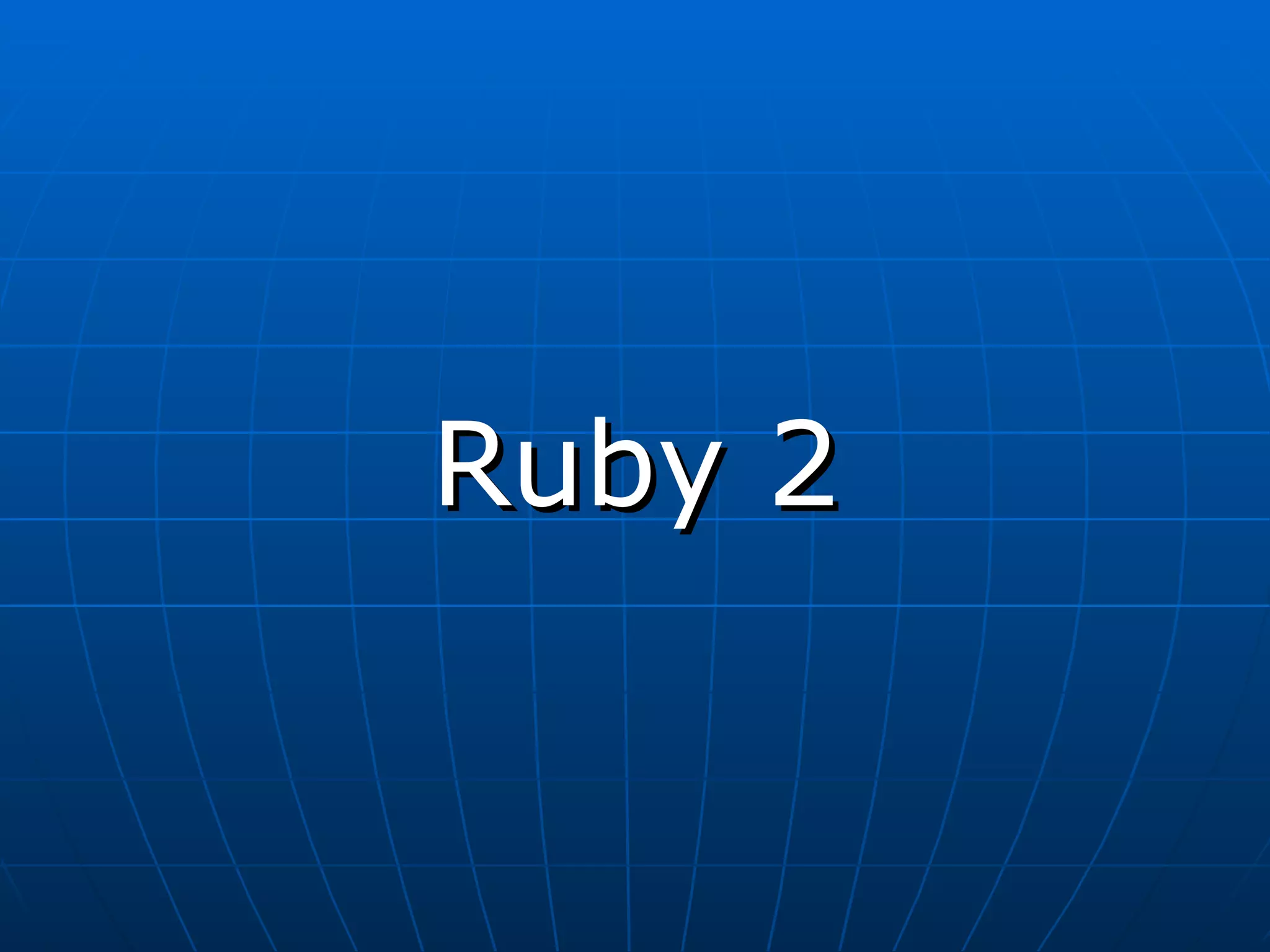
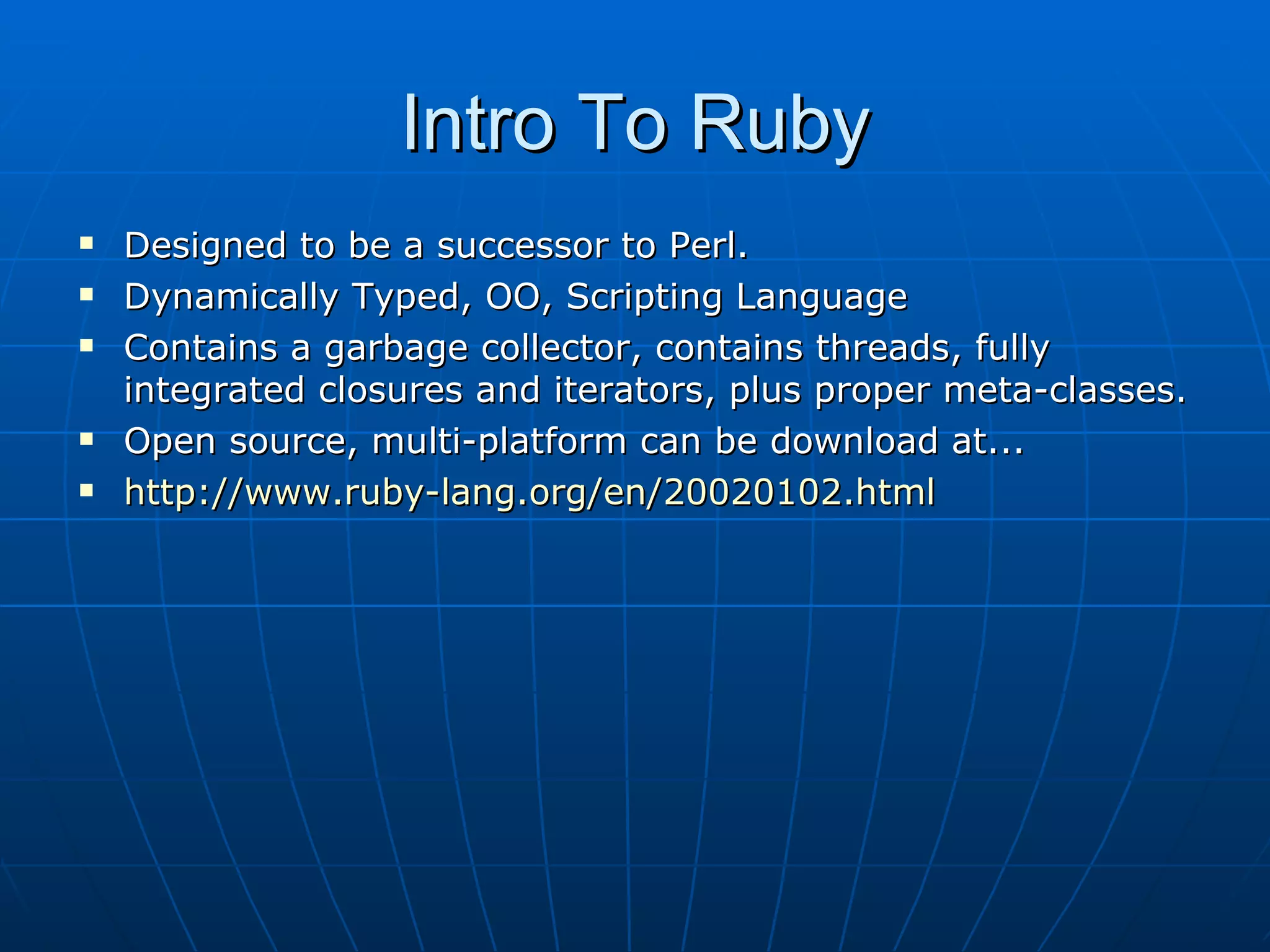
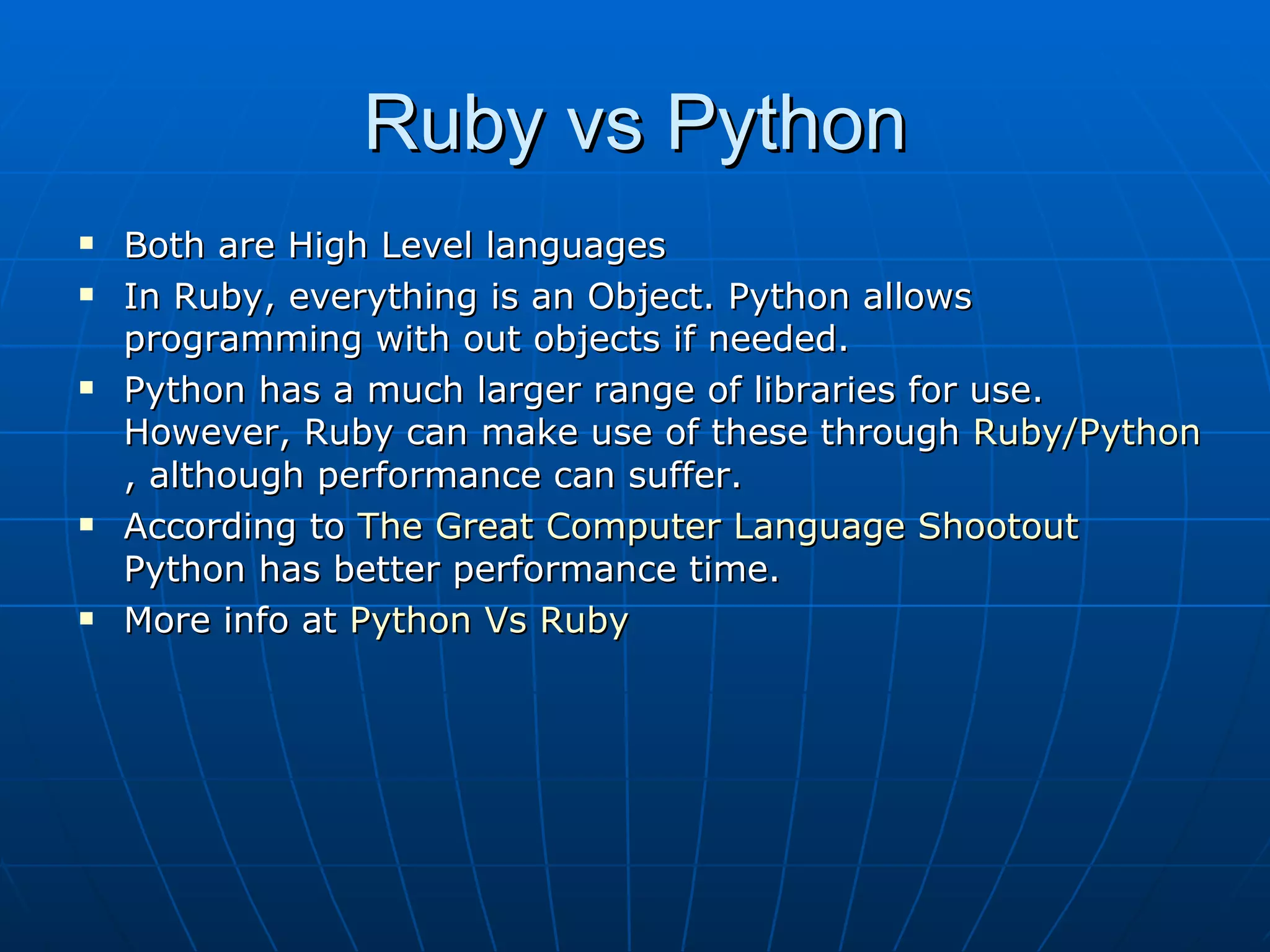
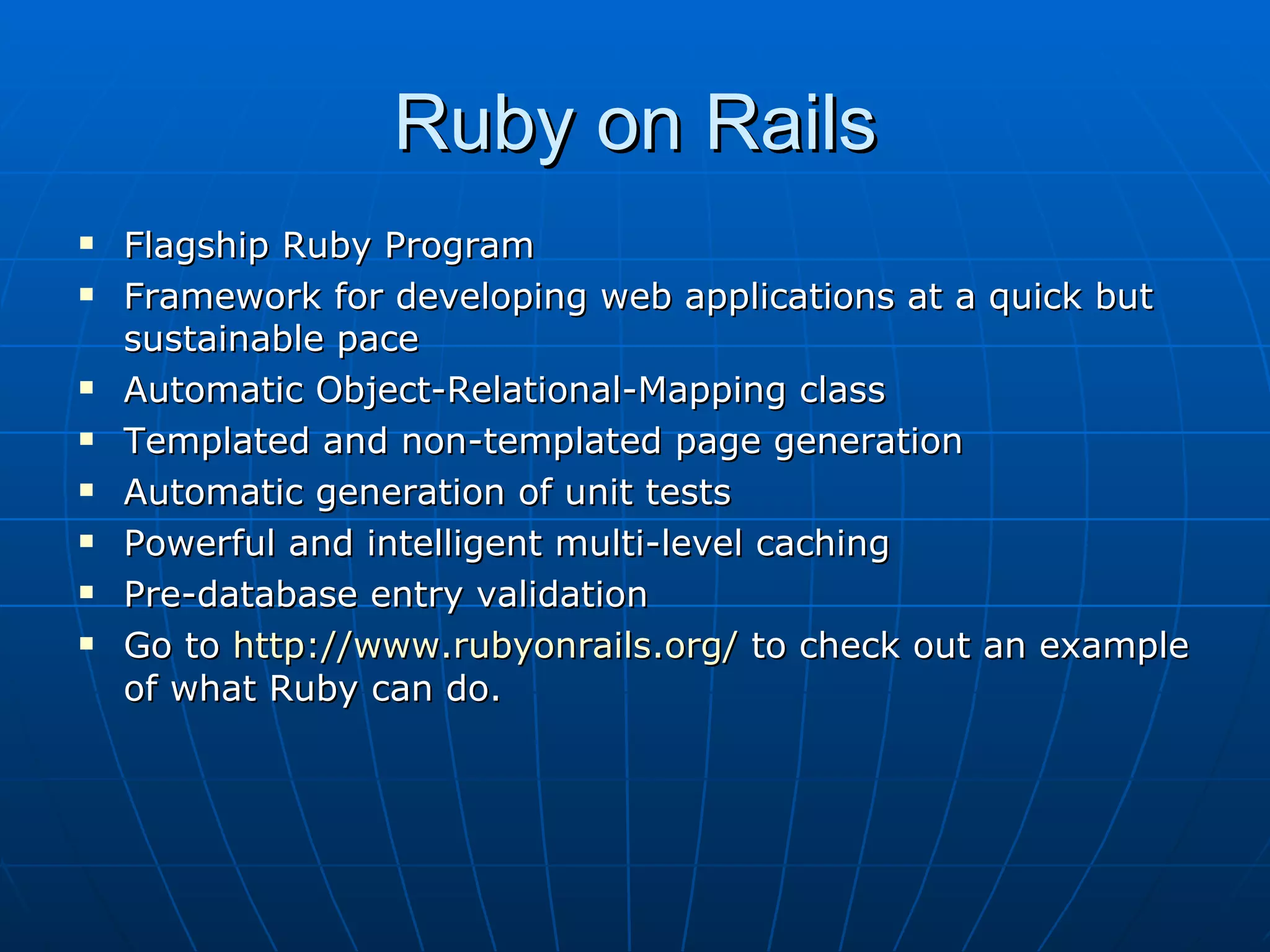
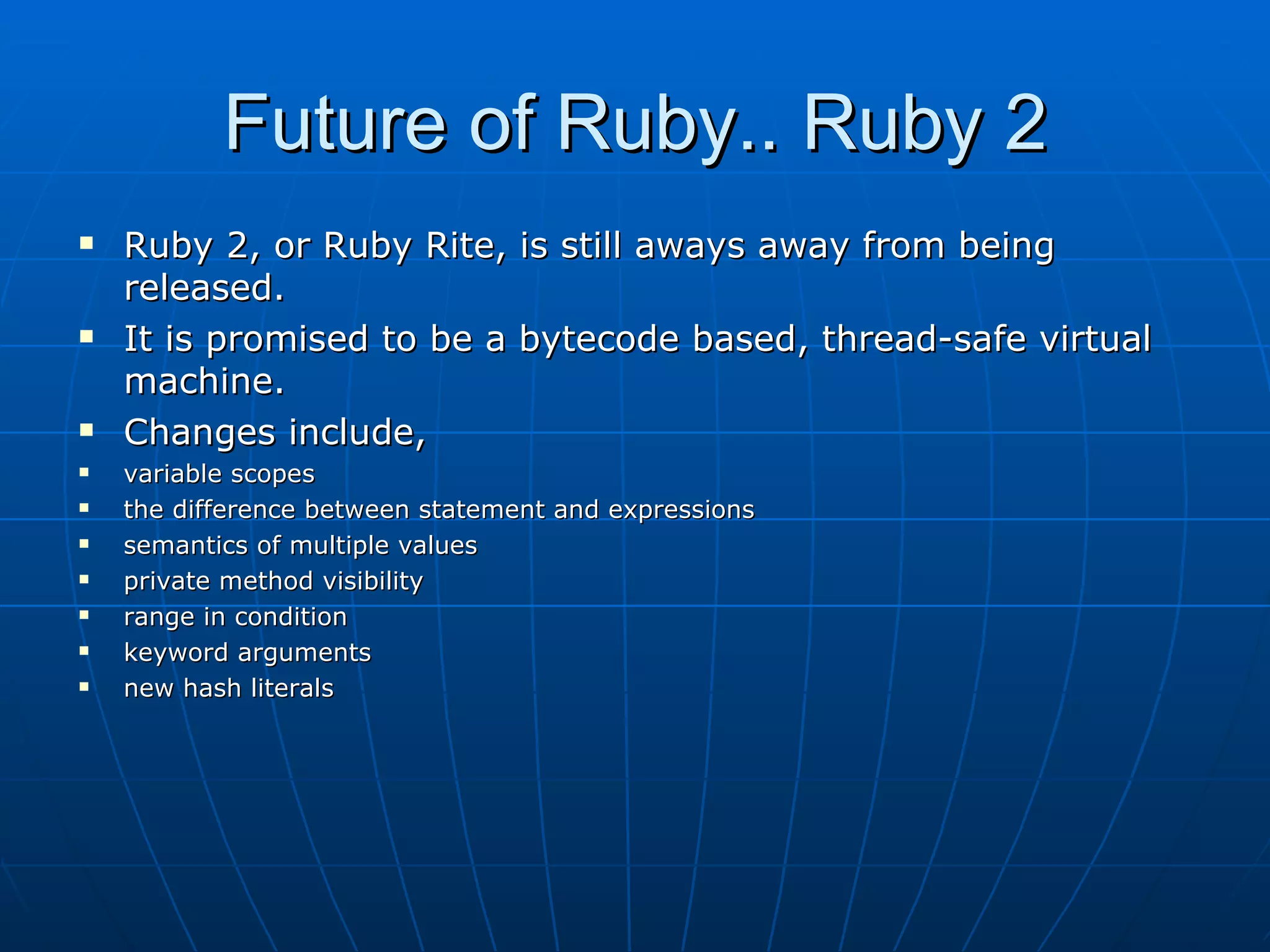
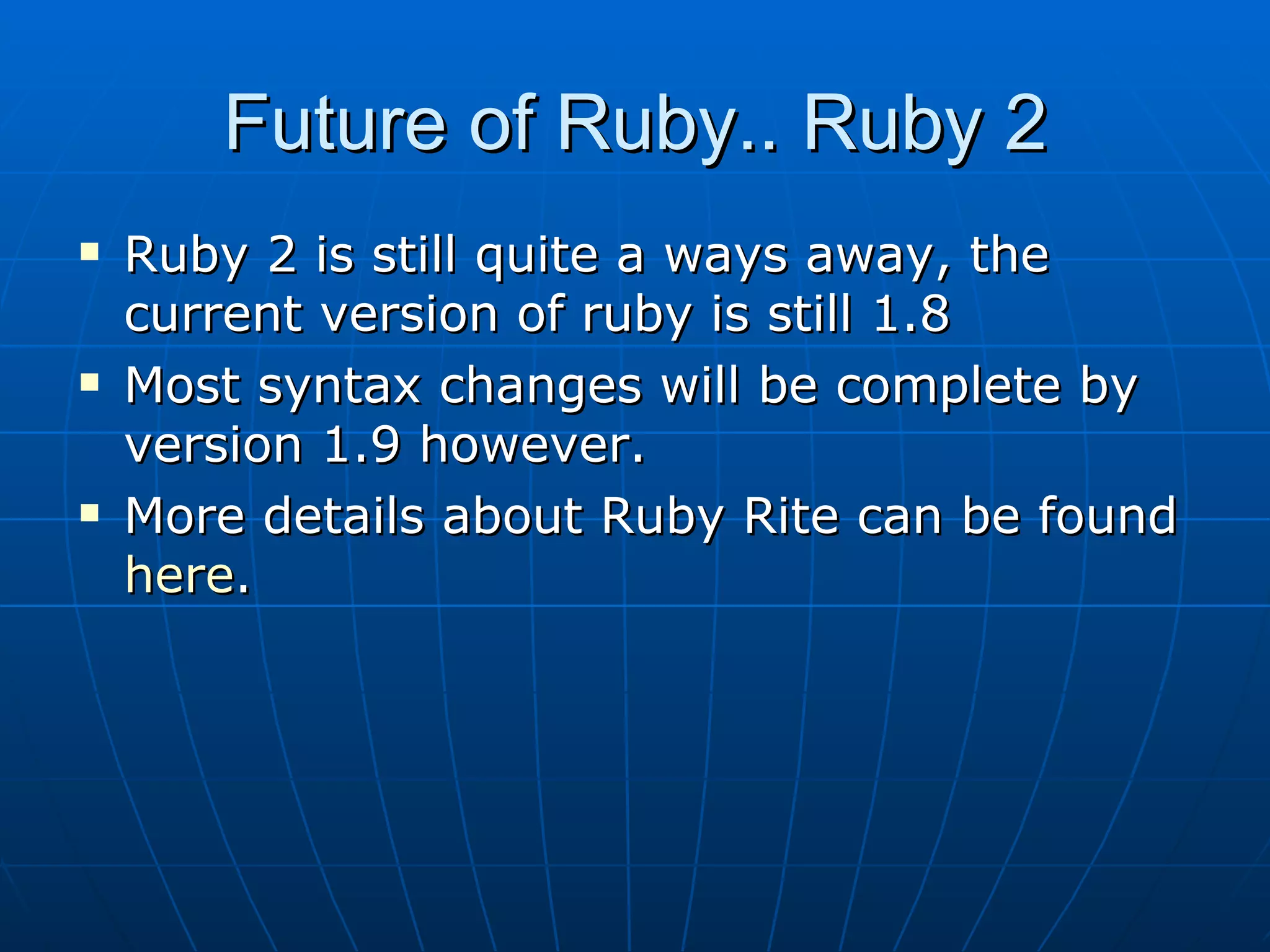
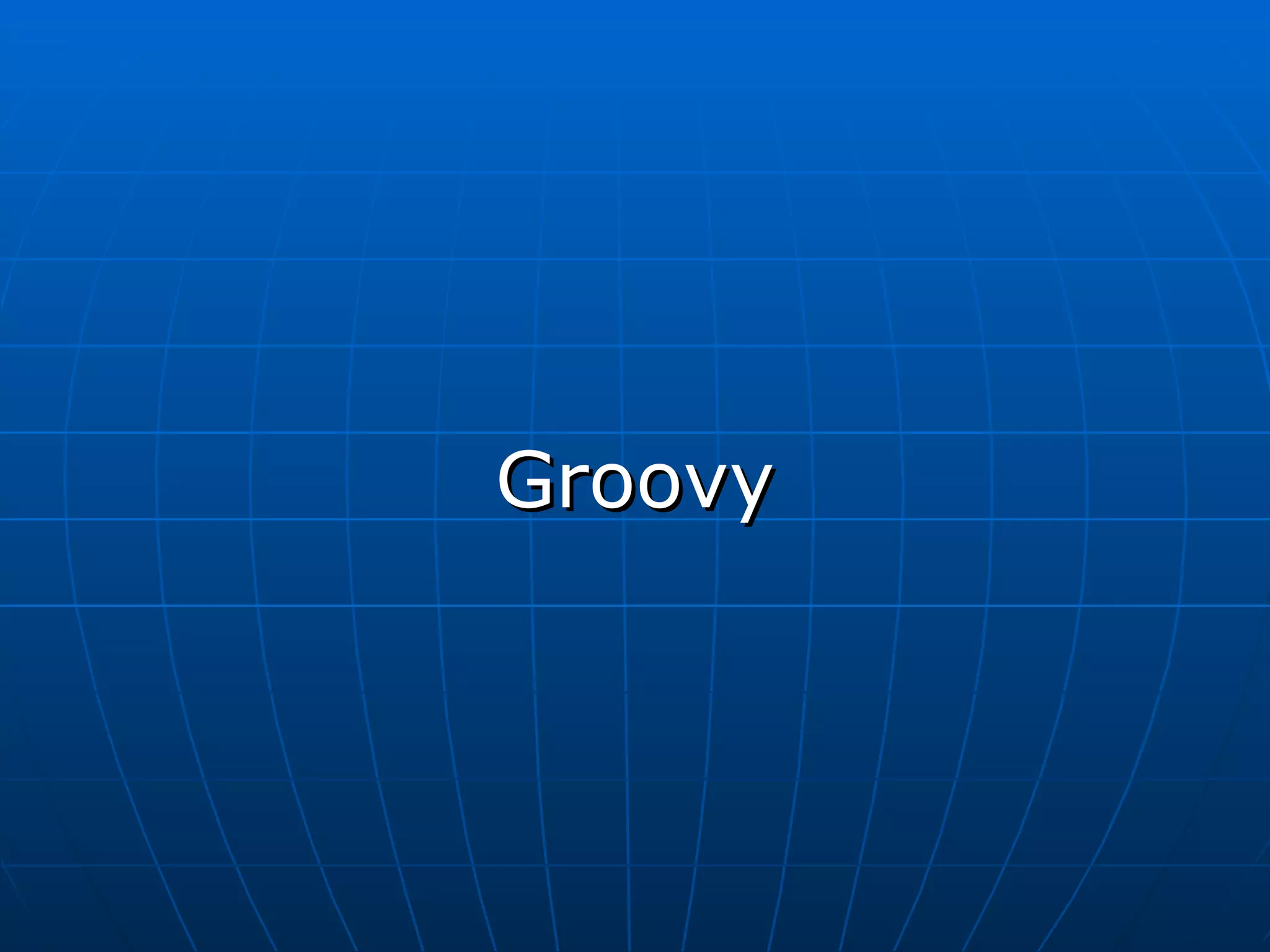
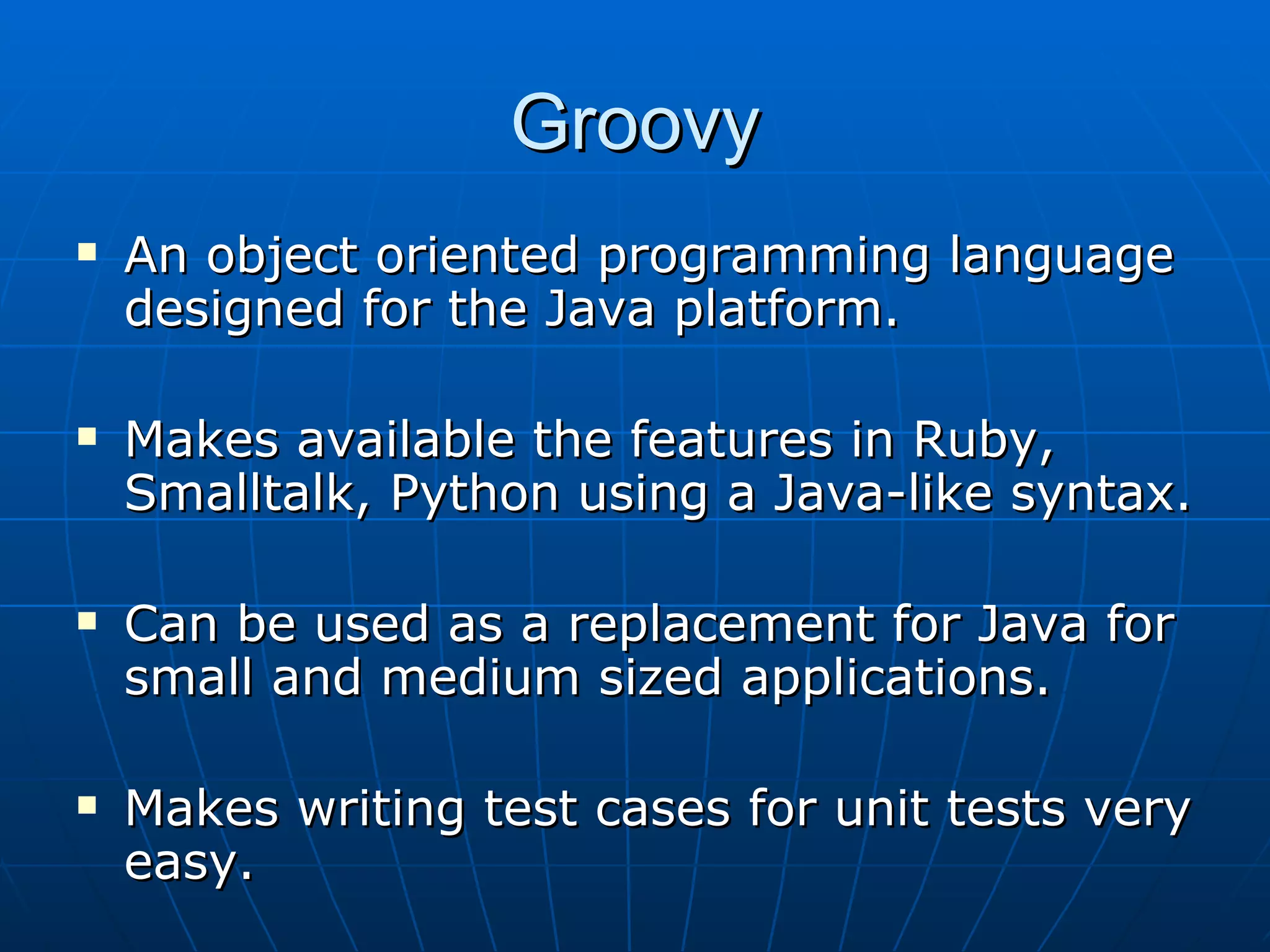
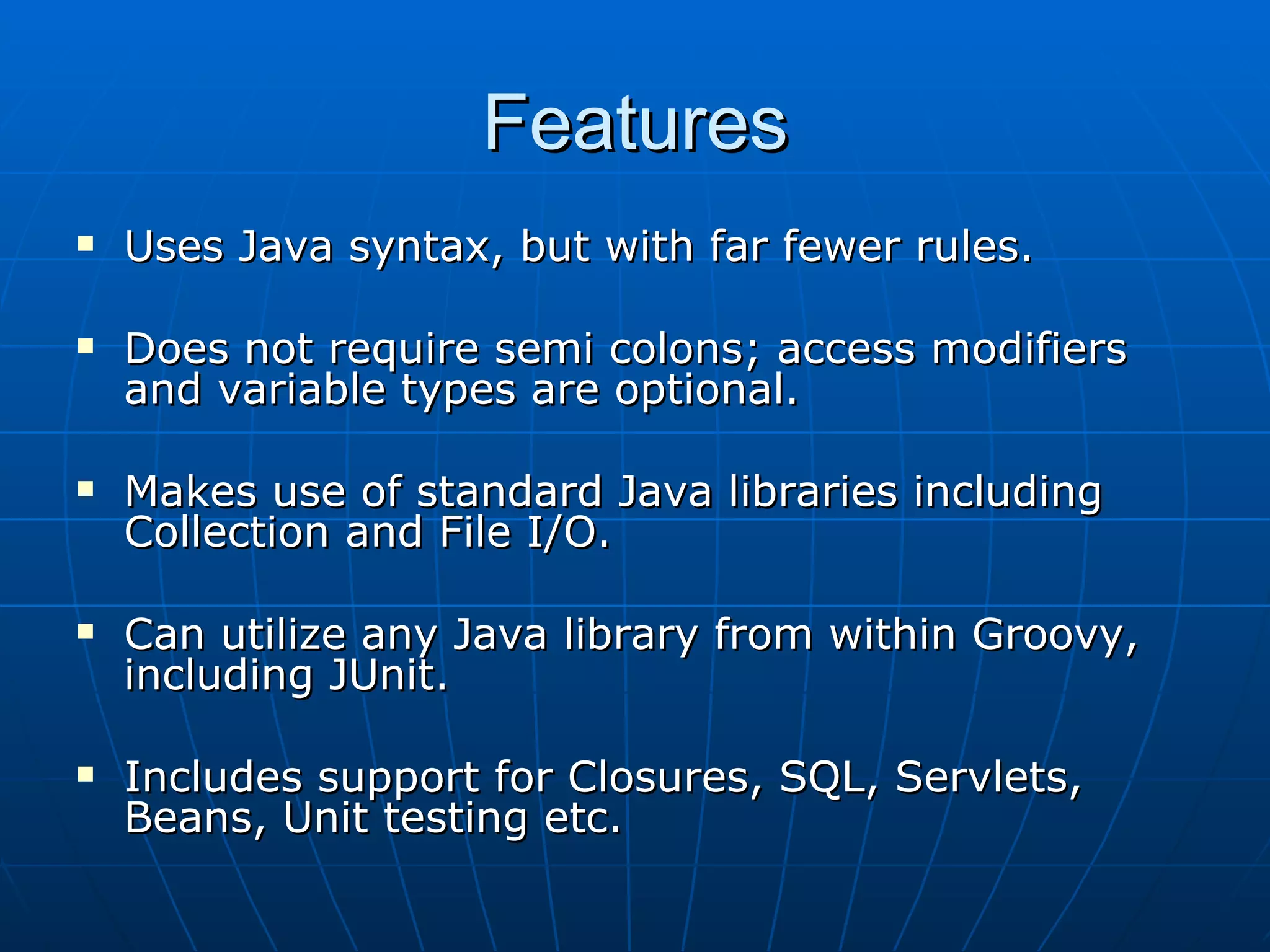
![Closures in Groovy A closure is one or more program statements enclosed in curly brackets. { [closureArguments->] statements } The main difference between a closure and method is that closures do not require a class or a method name. Closures can be assigned to a variable when created which can be passed around the program like any other variable.](https://image.slidesharecdn.com/futurepl-110427080355-phpapp02/75/Future-Programming-Language-17-2048.jpg)
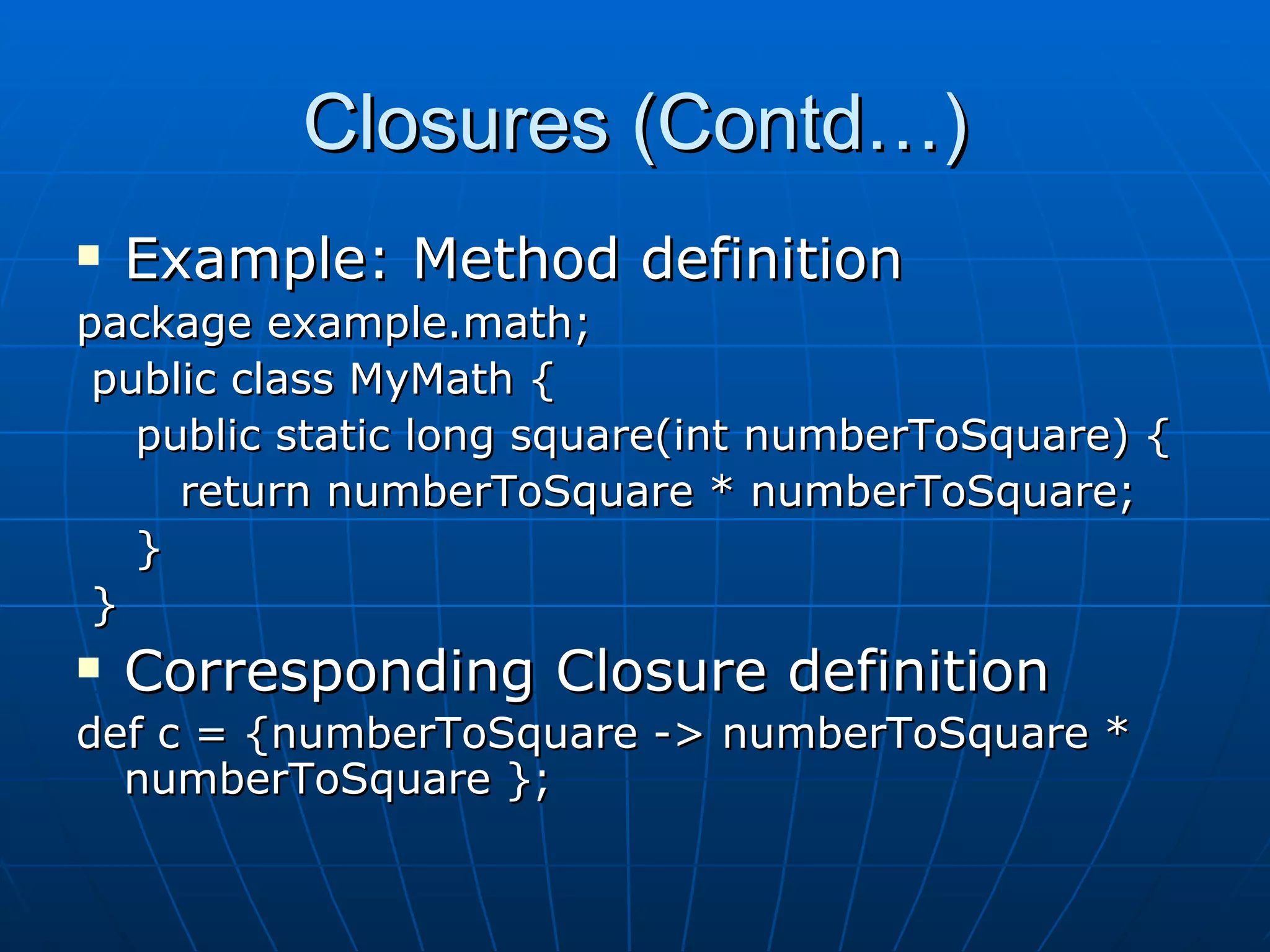
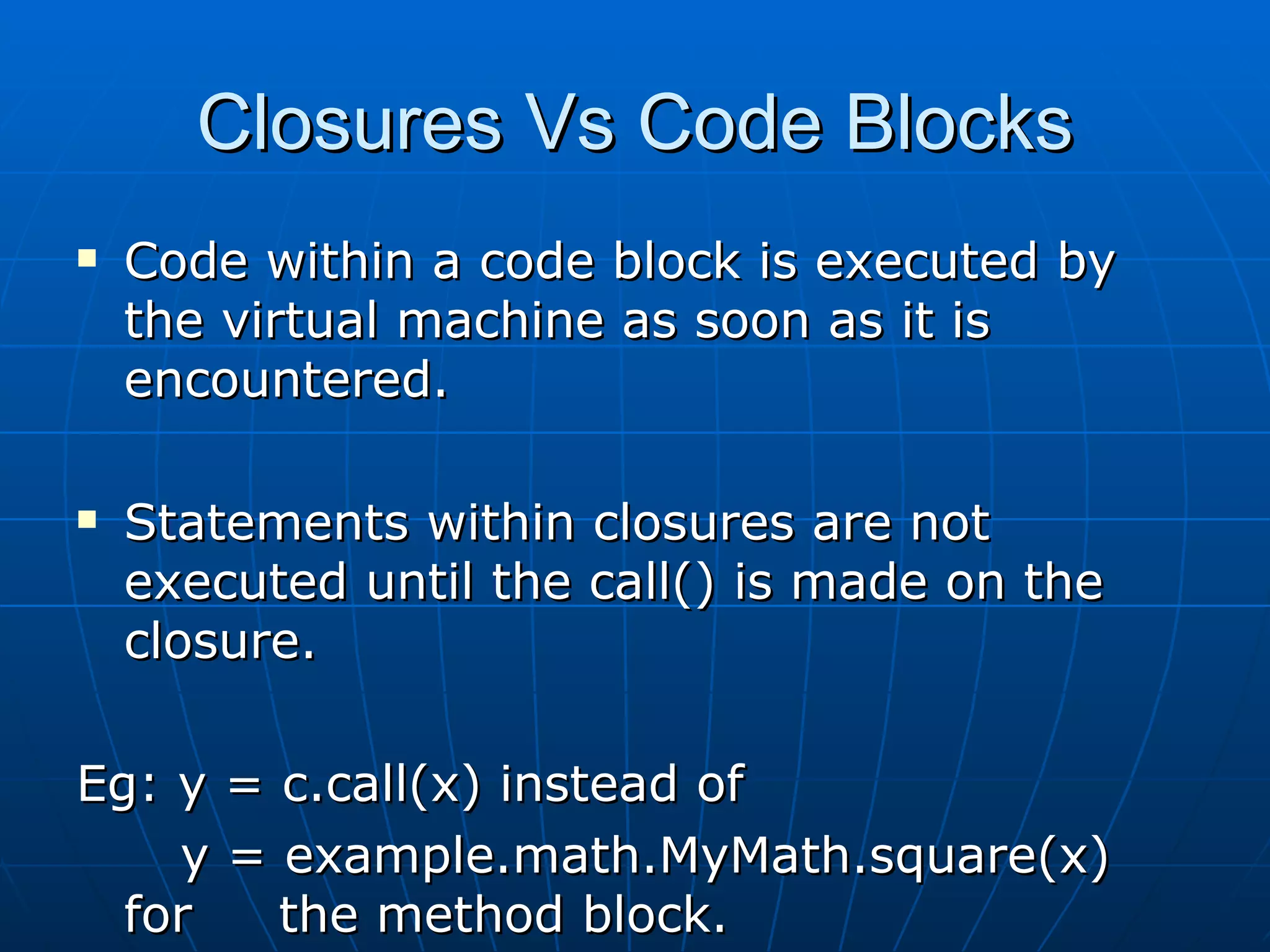
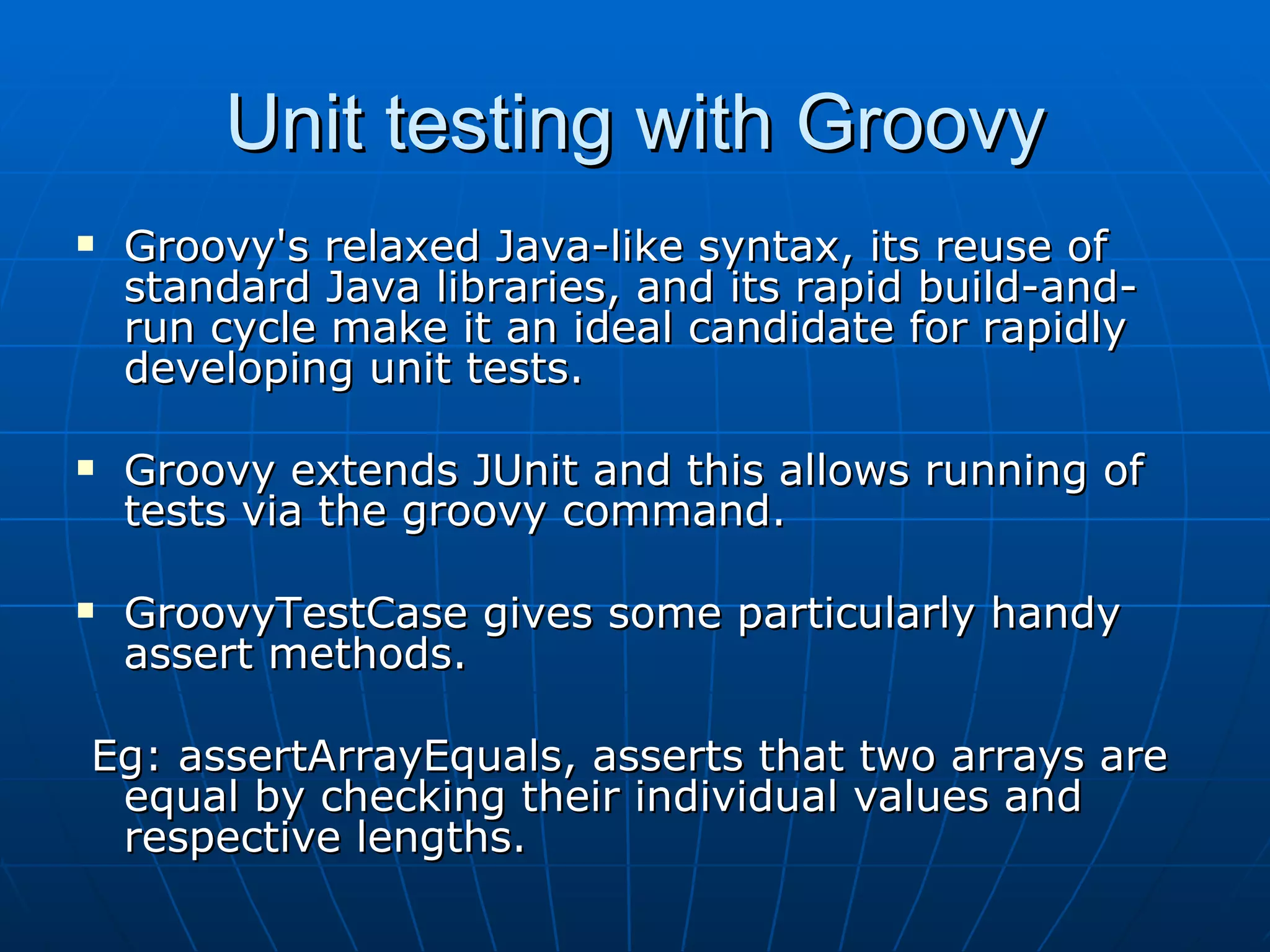
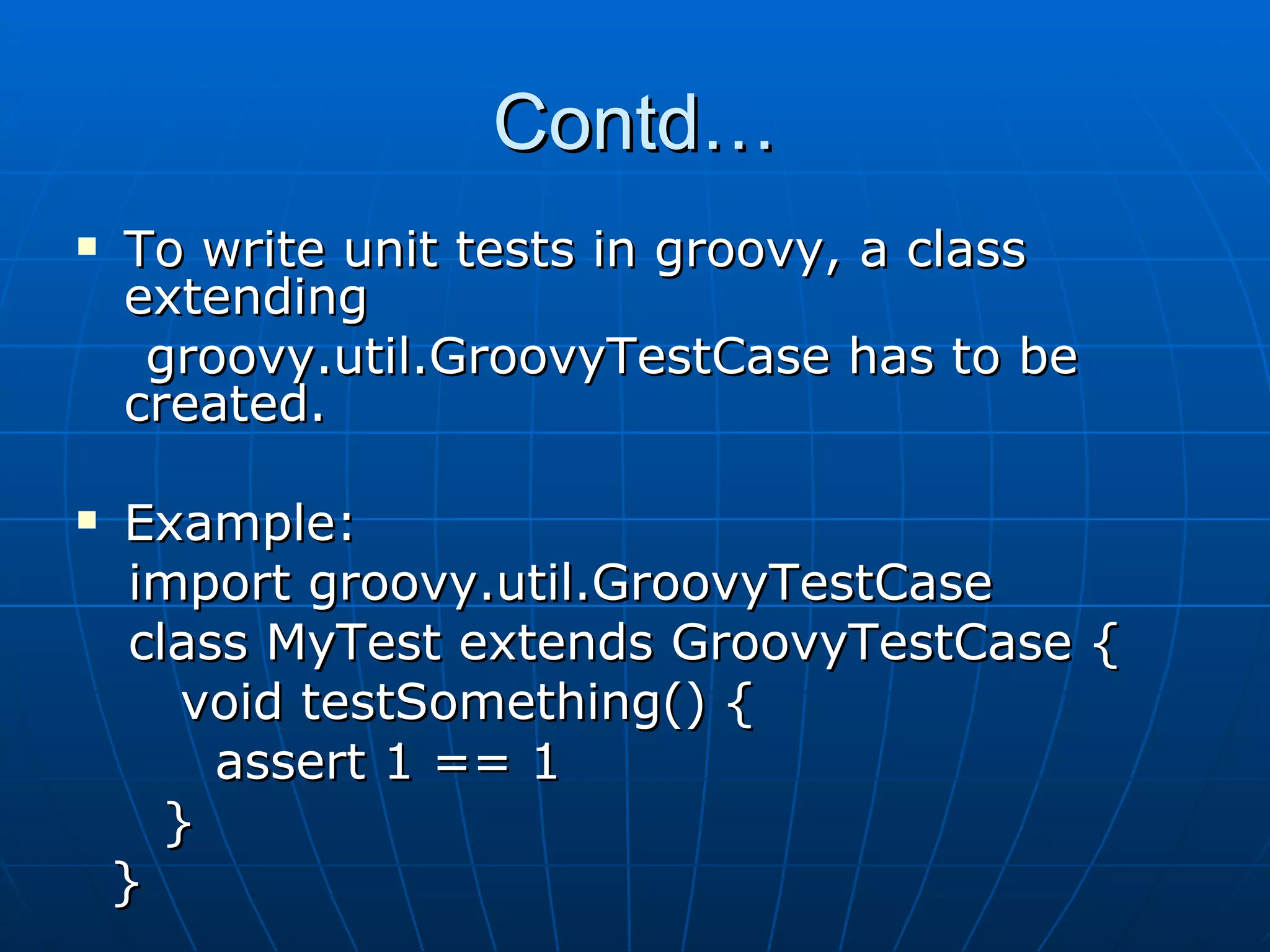
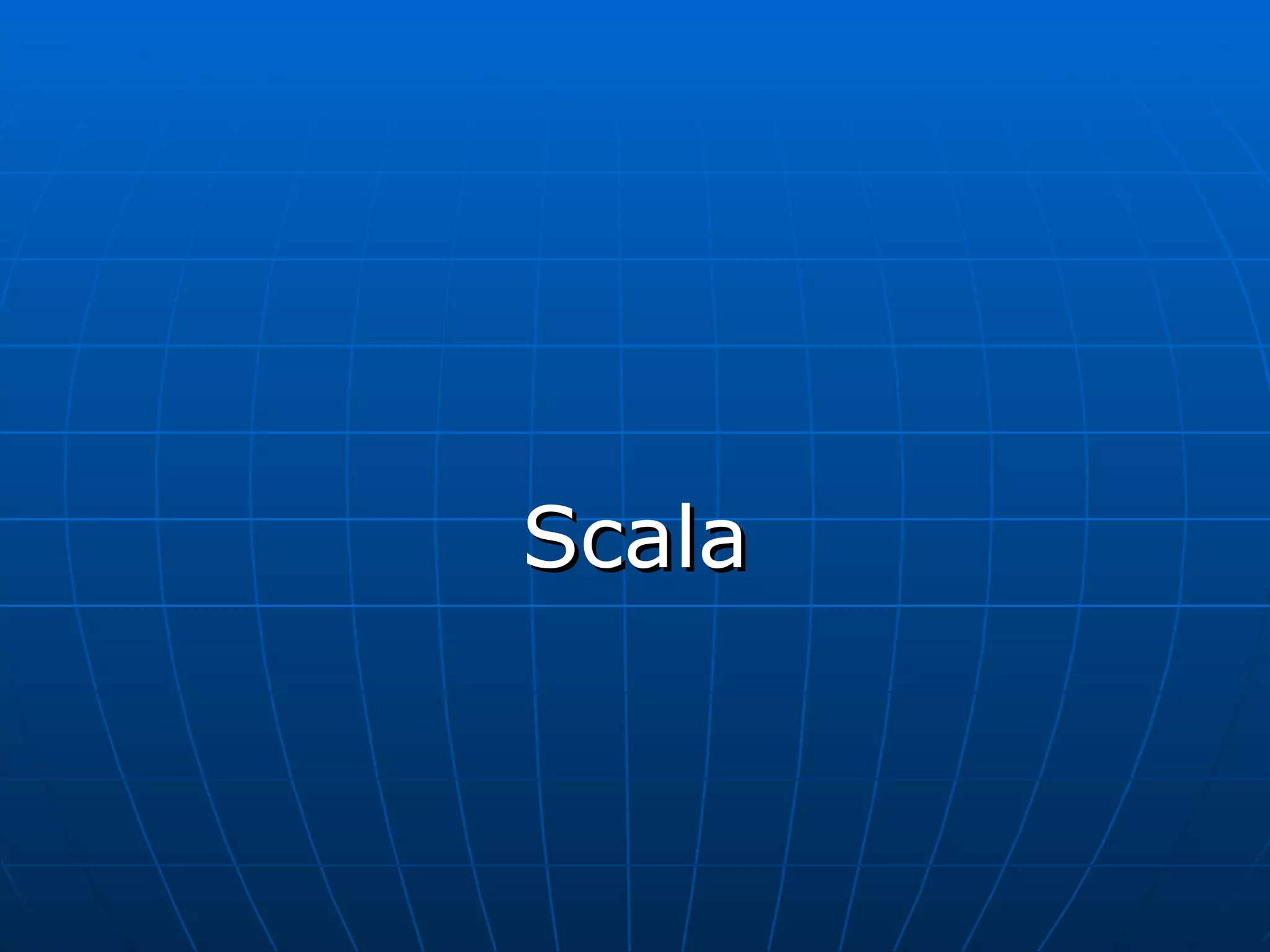
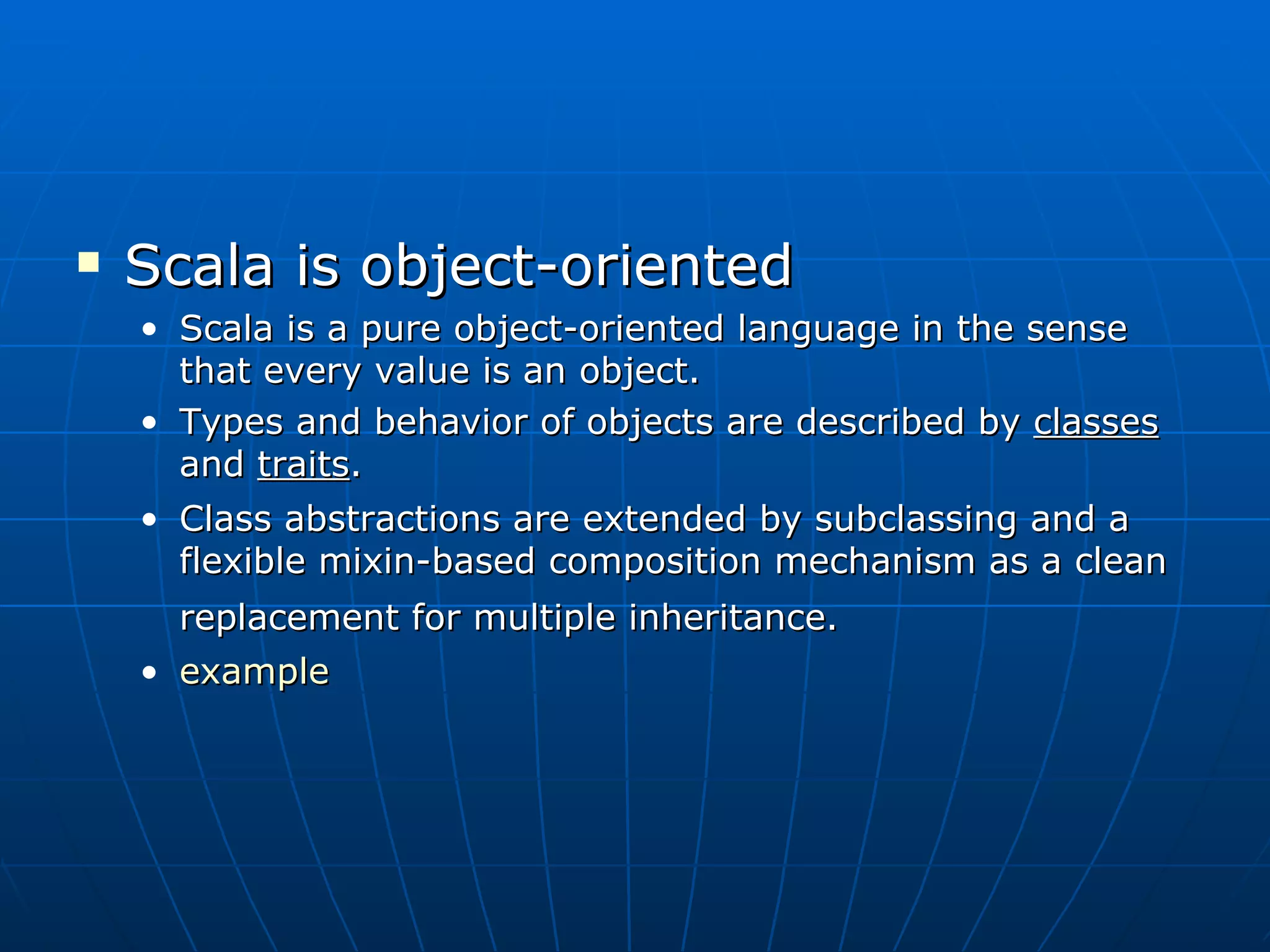
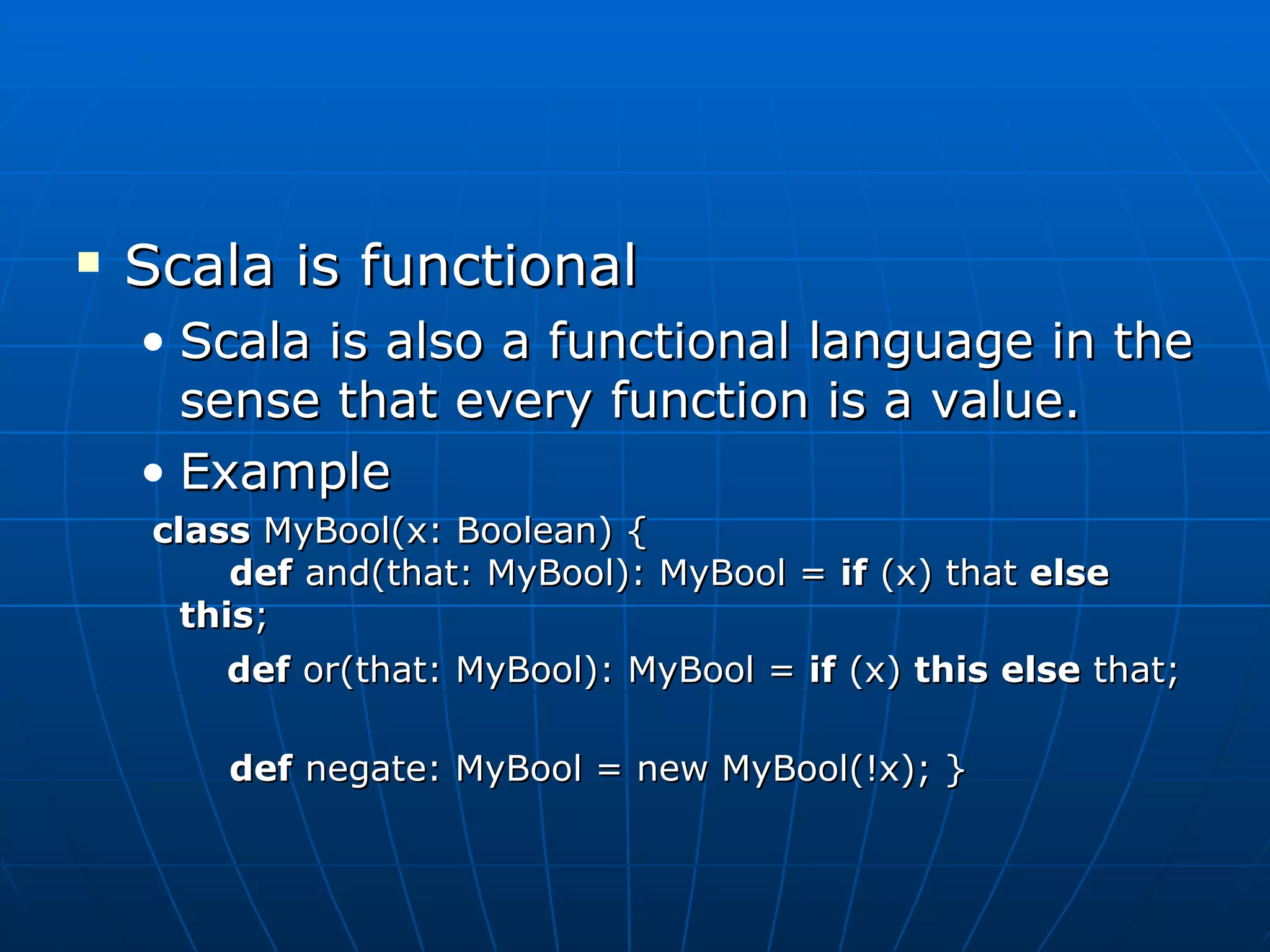
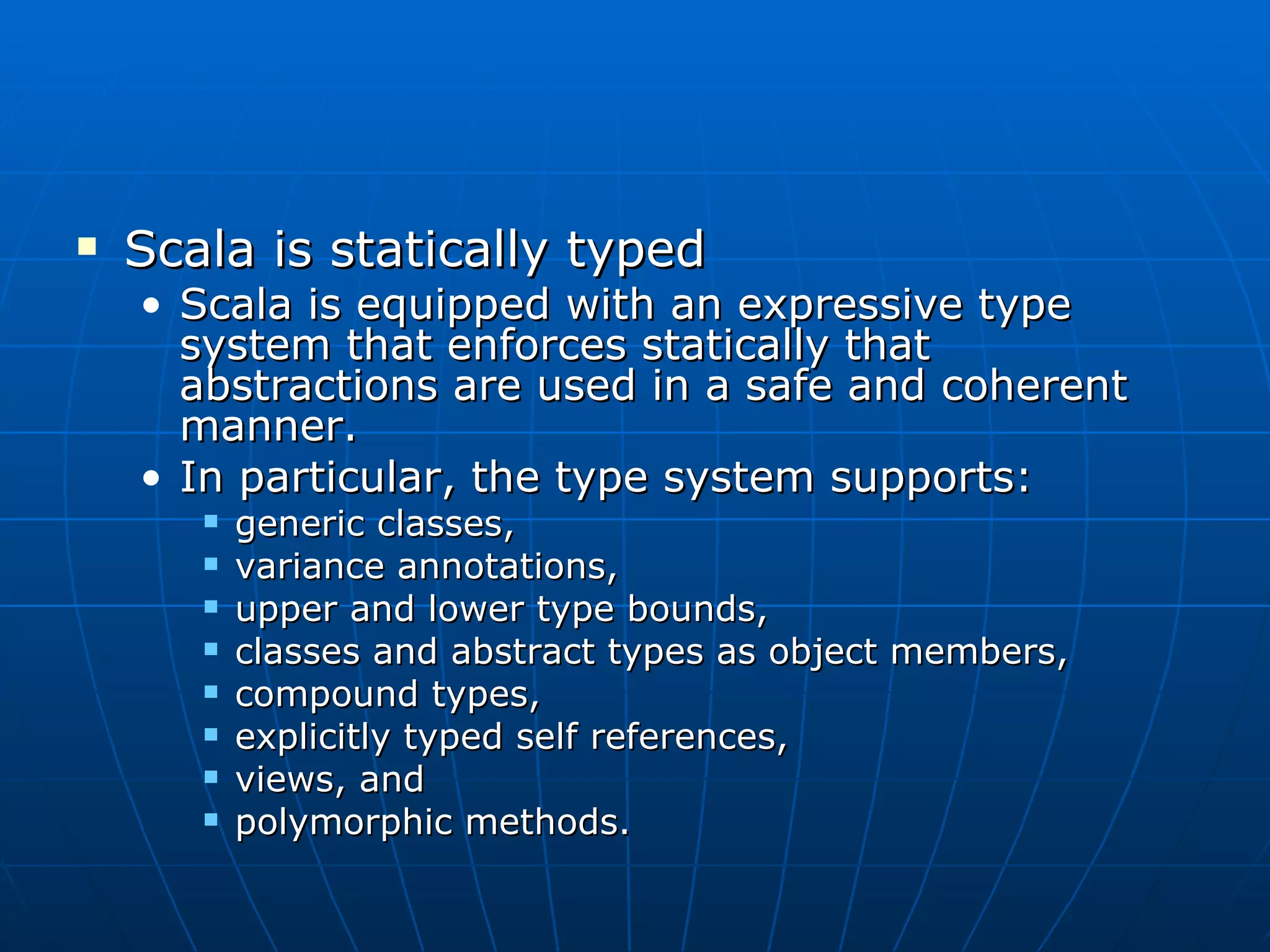
: List[T] = if (n == 0) Nil else x :: dup(x, n - 1); Console.println(dup[Int](3, 4)); Console.println(dup("three", 3)) }](https://image.slidesharecdn.com/futurepl-110427080355-phpapp02/75/Future-Programming-Language-26-2048.jpg)
